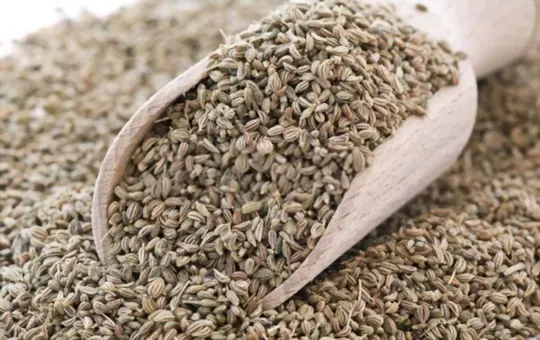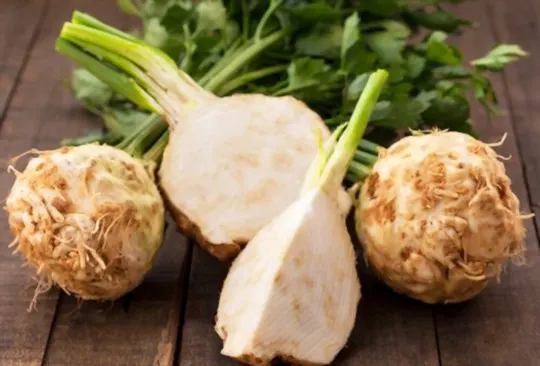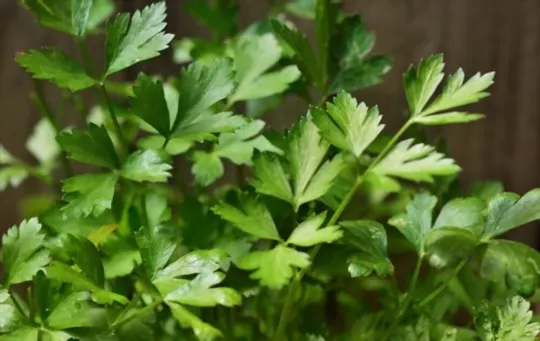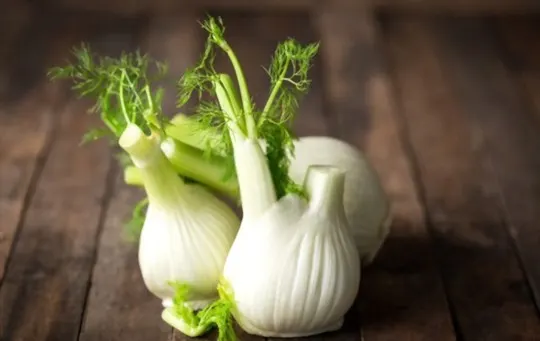Lovage is an herb that is well known for its celery-like flavor and aroma, making it a popular addition to a variety of dishes.
Known botanically as Levisticum officinale, lovage has its origins in the Mediterranean region and has since spread to many other parts of the world.
There are many recipes that call for lovage, but unfortunately, it can be difficult to find at times.
If you need a substitution for lovage in your recipe, read on to learn more about some of the best options available.
What is Lovage?

Lovage is an aromatic herb with a unique flavor that is often used in food and beverage recipes.
Its scientific name is Levisticum officinale and it belongs to the carrot family.
The flavor of lovage can best be described as a combination of celery, parsley, anise, and celeriac.
The leaves and roots of this herb can be used fresh or dry in soups, stews, salads, egg dishes, dressings, stuffing’s and many other recipes.
Lovage also makes a great tea—its leaves have been used since ancient Roman times for medicinal uses including improving eyesight and relieving headaches.
How to Cook and Use Lovage?
Lovage is a deep-green herb, often called “love-ache” in the UK and France.
It is related to celery but has a much bolder, aromatic flavor.
It has long been popular as an ingredient in various dishes across Europe.
Lovage is known for its strong celery-like flavor and can be used to add both a unique flavor as well as texture to dishes such as soups and salads.
Cooking with lovage can seem intimidating at first, but it’s easy once you get the hang of it.
In general, use lovage sparingly because its intense flavor easily overpowers other ingredients if used in excess.
Use it in small amounts when cooked into sauces and dressings that are served on seasoned meats or root vegetables.
Lovage also provides a distinct background taste when added to more delicate fish dishes like pan-fried trout or oven baked salmon with lemon butter sauce.
The leaves make an excellent addition to salads, providing them with color, aroma and flavour.
As with any new ingredient, try experimenting before committing it to your favourite recipe.
To get started, try different combinations of flavours like fresh herbs like rosemary or dill paired with lovage leaves for some added zest in salad dressings or scratch sauces.
If you’re feeling bold, roast some potatoes or carrots with the lovage leaves for an incredibly delicious side dish alternative.
Finally, adding some chopped up roots of the plant gives your soups an extra pop of flavor that’s difficult to replicate otherwise.
With these basics mastered – you’ll soon see why lovage has become so loved.
5 BEST Lovage Substitutes in Recipes
Due to its unique taste and texture profile, lovage is often used in traditional European dishes like soups, stews, dumplings, salads, pickles, as well as sauces like pesto.
If you’re looking for substitutes to use instead of lovage in your cooking projects then here are some options you can try:
1 – Celery Leaves

Celery leaves make the perfect substitute for lovage due to their similarity in both flavor and texture.
The fresh, earthy flavor of celery is incredibly close to that of lovage, and it’s easy to find in most grocery stores.
If you can’t find fresh celery leaves, dried or ground celery seed can be used instead.
Simply add 1/4 teaspoon of ground celery seed for every tablespoon of required chopped lovage in the recipe.
2 – Lovage Seeds

Lovage seeds, also known as Ligusticum sinense, are a spice used in some areas of China, Taiwan, and Japan.
The lovage plant itself is a bright green herb with an aroma reminiscent of celery.
It is popular in many traditional dishes and breads across East Asia and can also be found as an ingredient in some dishes served at western restaurants.
Lovage seeds are just as popular as the entire herb, but they tend to be more subtle in flavor than the leaves.
The seeds have a slight hint of bitterness on the tongue and are crunchy when chewed.
The flavor has been compared to that of celery seeds and fennel.
Lovage Seeds have been used for centuries for their unique aroma and subtle taste and make for a great addition to any recipe calling for such flavors.
3 – Celeriac

Celeriac, also known as celery root, is similar to lovage in flavor and aroma because of its close relation to celery.
Toss celeriac in salads and soups for a mild yet savory flavor that closely mimics that of lovage.
When substituting with celeriac, the ratio depends on the recipe; however, the general rule of thumb suggests you use about three times more celeriac than lovage for equivalent amount of flavor.
Celeriac also works well when used in recipes that call for chopped or diced lovage leaves as a garnish.
4 – Flat-leaf Parsley

Flat-leaf parsley is one of the most common ingredients when it comes to substituting Lovage.
This herb has a wonderful, fresh, grassy flavor that mimics the taste of Lovage extremely well.
It is an excellent choice for soups and stews, salads, vegetables dishes and more.
If you are looking for a grassy note with less potency than Lovage provides, this is a great substitute.
And in terms of added nutritional value compared to other herbs like oregano or sage, flat-leaf parsley holds its own.
This herb contains nutrient-dense vitamins like vitamin K (important for bone health) and vitamin A (important for vision).
Flat-leaf parsley also provides small amounts of minerals like manganese and zinc which can help you meet your daily nutritional needs.
So next time you find yourself needing a Lovage substitution, don’t forget about flat-leaf parsley — the fragrant green leaves will add flavor, texture and nutrition to any dish.
5 – Fennel

Fennel is an herb similar in flavor to celery, with a mild anise taste.
It’s one of the most popular lovage substitutes.
To use it, substitute equal amounts of finely diced fennel for the lovage called for in any recipe.
Fennel works especially well in soups, stuffings, and salads – giving them a pleasant, mildly spiced flavor and aroma.
Fennel is also less bitter than lovage leaves, so be sure to adjust seasoning measurements accordingly if you are using it as a replacement.
Conclusion
The herb lovage has a distinct celery-like aroma and a very pungent taste that can lend character to any dish.
However, the availability of lovage is quite limited, which can often require cooks to find suitable substitutes.
Fortunately, there are plenty of different herbs and spices that are suitable for replacing lovage in your favorite recipes.
All five of these options can provide a unique flavor profile to your dish and make up for this herb’s absence.
Each one brings its own unique flavor to the table, so you’ll have plenty of delicious options if you don’t have access to fresh or dried lovage.
Undoubtedly, finding the right replacement for lovage will require experimenting with various flavors in order to determine which option works best with your dish.
With that said, exploring these possibilities can open up new doors in creative forms of cooking and enhance the taste experience for everyone who indulges.
Frequently Asked Questions
What is Lovage?
Lovage is an herb that has a strong celery-like flavor and aroma, and is widely used in European and Middle Eastern cuisines.
It is commonly used as a seasoning for soups, stews, and sauces, as well as a garnish for salads.
What are the 5 best substitutes for Lovage?
The 5 best substitutes for Lovage are celery leaves, celery seed, celery salt, fennel, and parsley.

5 BEST Lovage Substitutes in Recipes
Ingredients
- 1 – Celery Leaves
- 2 – Lovage Seeds
- 3 – Celeriac
- 4 – Flat-leaf Parsley
- 5 – Fennel
Instructions
- Choose your preferred substitute from the list of options.
- Organize all of your ingredients.
- Use the proper substitute to cook your recipes.

Carrie is a food writer and editor with more than 15 years of experience. She has worked for some of the biggest names in the food industry, including Bon Appétit, Food & Wine, and Martha Stewart Living.
As the Editor in Chief of IntroChicago.com, Carrie oversees all of the content on the site. She also manages the team of contributing writers and editors, who help to create delicious recipes, helpful tips, and informative articles that you’ll find on the site.
A native of the Chicago area, Carrie is passionate about all things food. She loves trying new restaurants and experimenting with new recipes in her kitchen. She’s also a graduate of the Culinary Institute of America, so she knows a thing or two about food!
